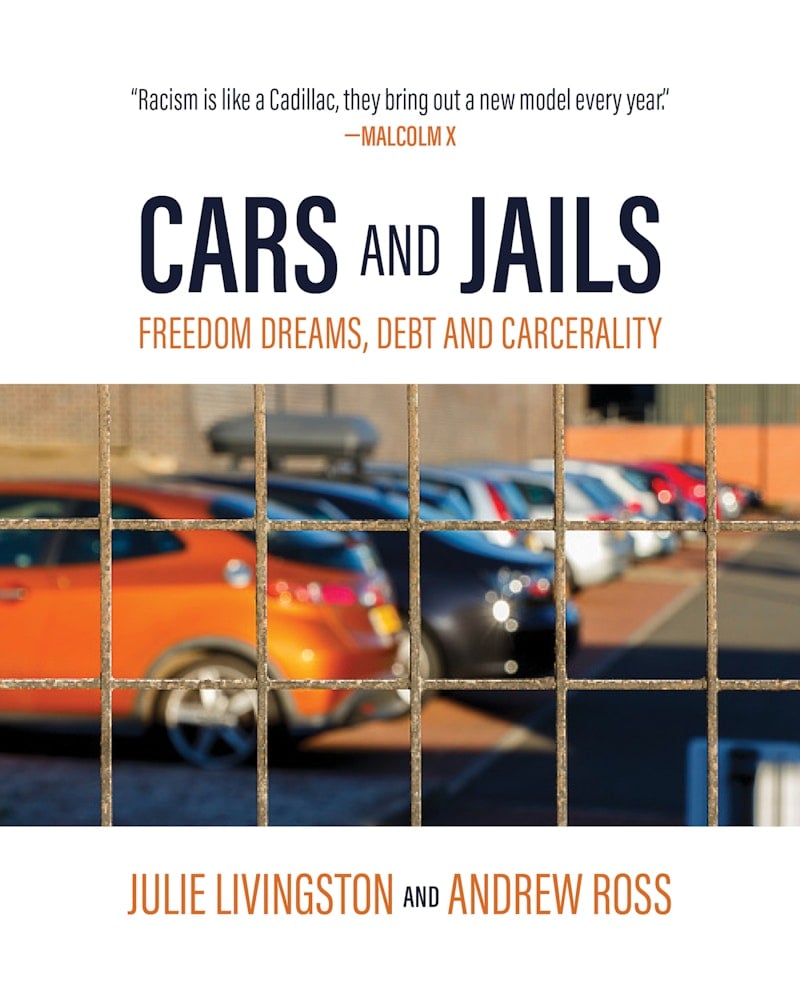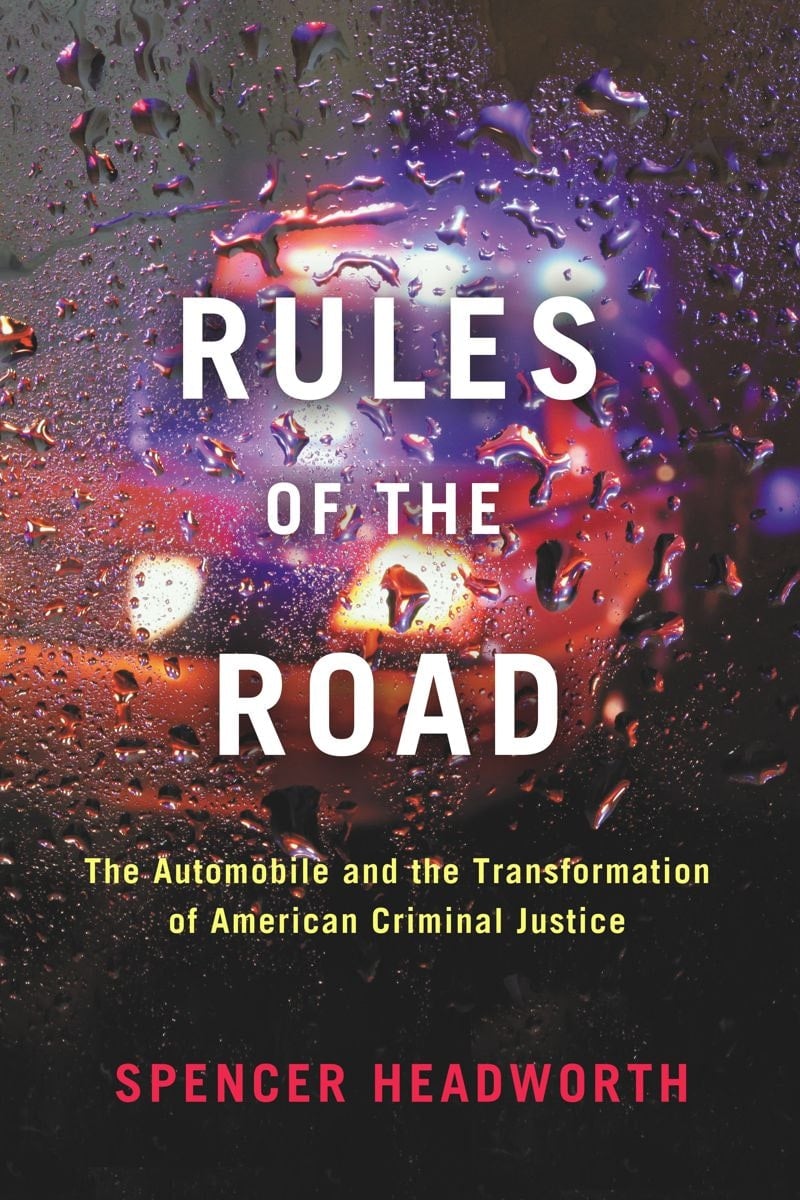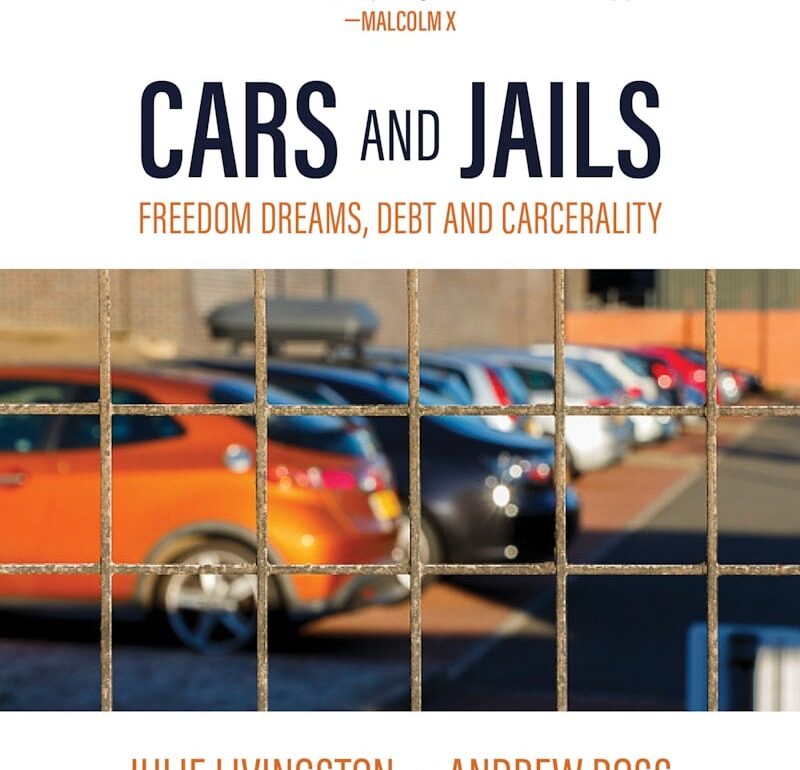On a hot Sunday morning in Frisco, Texas, this July, an out-of-state family was traveling to a youth basketball tournament outside of Dallas when they were pulled over and held at gunpoint. A local cop had incorrectly run their license plate number, suspected them of driving a stolen car, and initiated a “high-risk” traffic stop. On subsequently released body-cam footage of the stop, the driver, who is Black, can be heard pleading with an officer as her sixth grade son is put in handcuffs. “Please don’t let them do that to my baby,” she says. “This is very traumatizing. Why is my baby in cuffs?” “I’m a basketball coach,” her husband pleads as his son can be heard crying in the background. “Don’t do this to my son. Please.” As the group of officers realizes their mistake and tries to explain what went wrong—“This is the normal way we pull people out of a stolen car,” one lamely clarifies—the father replies: “It could have gone all wrong for us.”
Look under the hood of many of the past decade’s spectacular instances of police violence, and there’s a high chance you’ll find a car and its attendant law enforcement prerogatives. A new generation of Black-led protest began in Ferguson, Missouri, when police officer Darren Wilson stopped Michael Brown because he was in violation of a municipal jaywalking ordinance, almost exclusively wielded against Black pedestrians. The Justice Department report that followed showed that the cash-strapped municipal government was balancing its books by imposing fines and fees on its Black residents through traffic stops, treating them “less as constituents to be protected than as potential offenders and sources of revenue.”


Add to these dangers the fact that cars—a necessity in most parts of the country—are expensive and that taking out an auto loan can lead to a variety of financial perils. Auto debt nearly doubled in the decade following the Great Recession and recently reached a record high of $1.56 trillion—slightly below the total sum owed in student loans, which received significantly greater attention in the media and public policy. Earlier this year, the Consumer Financial Protection Bureau and the New York attorney general sued one of the country’s largest subprime auto lenders, alleging that it pushed predatory loans on “millions of financially vulnerable consumers.” The car-buying experience, the suit claims, turned “into a nightmare” for the lender’s debtors, who “face unaffordable monthly payments, vehicle repossessions, and debt collection lawsuits.”
For over a century, the automobile has served as an icon of American prosperity and individual liberty. But for a large portion of drivers, the car opens into worlds of unfreedom: into the gaping maw of America’s courts, jails, and prisons on the one hand and into the arms of predatory creditors on the other. That, at least, is the thesis of Cars and Jails, a new book by NYU professors Julie Livingston and Andrew Ross. Cars, once America’s most important industrial commodity, are now, for so many, a vehicle of debt-driven extraction. They are also the setting of the most common interaction between citizens and police—one that plays out on streets and highways more than 20 million times annually, often as a humiliating ritual of domination and submission. How did this happen?
“The story of modern American criminal justice is also in large part a story of the car,” sociologist Spencer Headworth announces in his new book, Rules of the Road. That story begins in the early twentieth century, when the rise of the automobile wreaked havoc in American cities. Newspaper accounts of automobile deaths consistently emphasized the grisly fact that more U.S. citizens were killed by cars on American streets during the years of World War I than by German bayonets and munitions on the battlefields of Western Europe. Journalists and cartoonists compared the car to a technological Moloch, greedily receiving child sacrifices, fueling what Livingston and Ross describe as a period of “urban warfare over the right of way between plebeian pedestrians and gentry behind the wheel.”
At first, most cities meekly attempted to rely on the informal social norms that had governed foot and horse traffic on the country’s streets during the previous century. “MOTORISTS ATTENTION! YOU ARE ON YOUR HONOR. FRESNO COUNTY HAS NO SPEED COPS. DRIVE SO THEY WILL NOT BE NEEDED,” pleaded a 1915 road sign. That approach proved short-lived. As mangled bodies piled up, cities empowered police to manage traffic, a development that would, Headworth writes, “fundamentally shape US policing and police departments.” From 1910 to 1930, as the number of registered passenger cars increased over thirty-fivefold, the number of police officers more than doubled. Fresno found that motorists took the county’s honor-system billboards to mean that “road races were in order.” Seeing no other option, the city hired a traffic cop and put the signs up for sale.
In order to manage the brave new world of the automobile, police needed to be able to keep up—literally. For Headworth, a major figure in the development of automobile-centric law enforcement is August Vollmer, later dubbed “the Father of Modern Policing.” As police chief in Berkeley, California, Vollmer established mobile bicycle patrols in 1906. By 1914, every Berkeley cop had a Ford Model T patrol car, making Vollmer’s newly professionalized corps the very first completely mobile police force in the United States. This development, the sociologist Julian Go has written, allowed cops to “swarm to outbreaks of disorder or troublesome neighborhoods, raid criminal headquarters, and swiftly control crowds and strikes.”
Headworth largely portrays Vollmer’s push to motorize police as a reflection of his Progressive-era interest in turning police departments into “rational, efficient agencies focused on the goal of crime control.” The emphasis on his rational and bureaucratic approach, however, glosses over an important source of Vollmer’s ideas: his work overseas at the turn of the century, crushing local resistance in the Philippine-American War. As a reporter for the Honolulu Star later observed, when Vollmer motorized his police force, he “put into effect some of the methods he used in chasing river pirates … and bushwhackers in the steaming wild jungles” of Manila. Vollmer himself remarked that he saw “mobility” as one of “the military rules which have proved to be efficacious in achieving the objectives of the police.” One of the first actions he took as police chief was to have his mobile force raid Berkeley’s Chinese-owned opium and gambling dens, whose “yellow hatchet” guards he likened to Filipino insurgents.
All the while, the automobile industry and allied pressure groups waged a fierce campaign to give drivers unrivaled precedence on the roads. Roads, which once conveyed horses, carts, and people on foot, were to become the exclusive territory of motor vehicles. Automakers even coined the term “jaywalker”—to describe a low-class country rube unaware of the right way to navigate city streets—and in some places criminalized walking into the street. Though familiar now, the notion of jaywalking was controversial at the time: In 1915, The New York Times excoriated the NYPD commissioner’s use of the term as “highly opprobrious” and “truly shocking.”
These developments, which cleared American roads of practically anything but cars and gave police broad legal authority and technological capacity to deal with the fallout, were immensely important. Vollmer’s hope that the average traffic cop would display “the wisdom of Solomon, the courage of David, the strength of Sampson, the patience of Job, the leadership of Moses, the kindness of the Good Samaritan, the faith of Mary, the diplomacy of Lincoln, and the tolerance of Confucius” was laughably naïve, even at the time. In one notable case in Arizona in 1918, the state Supreme Court censured a sheriff who shot an innocent driver at a traffic stop for actions “more suggestive of a holdup by highwaymen than an arrest by peace officers.”
The powers that police gained over America’s roads and drivers bore their bitter fruit in the 1970s, a decade of collapsing labor power, tax revolts, fiscal crises, and the “war on drugs.” As an era of postwar prosperity unraveled and unemployment spiked, Black workers were among those most sharply affected by job losses. At the same time, cities and states embarked on a prison-building boom. In Michigan, home of the “Big Three” auto manufacturers, the Black unemployment rate jumped from 8.8 percent in 1973 to 21.2 percent in 1983; from 1973 to 1978, the state’s prison population almost doubled. Automobiles played a central role in this process. By the 1970s, driving was a necessity in most parts of the country, at least if you wanted to access employment, health care, food, and education. And increasingly that meant inevitable contact with the police, who were armed with access to drivers’ records via shiny new squad-car computers and who made pretextual stops a core element of day-to-day policing.
Beginning in the 1970s and ’80s, municipalities around the country began filling budgetary shortfalls by extracting cash through fines and fees at every moment of a person’s involvement with the criminal legal system, from arrest to pretrial detention, to sentencing, to incarceration, to probation. In 1991, just a quarter of incarcerated people reported receiving legal financial obligations, or LFOs—debts related to a conviction. A decade and a half later, two-thirds did. A 2015 multistate study conducted by the Ella Baker Center for Human Rights found the average debt for court-related fines and fees alone was $13,607; for comparison, the study found that over two-thirds of people in jail reported incomes of below $12,000.
Also beginning in the 1980s, states began imposing driver’s license suspensions for offenses totally unrelated to driving, including for failure to pay LFOs. A 2019 study found that 15 percent of North Carolina’s licensed adult drivers had active license suspensions for failure to appear in court or pay fines, with Black and Latino drivers vastly overrepresented. In California in 2017, 17 percent of the state’s entire adult population had their licenses suspended for failure to pay traffic fines or appear in court. Additionally, the late twentieth century saw the dramatic expansion of police use of civil forfeiture—when police seize assets that they suspect are connected to criminal activity. This occurred first as a weapon in the “war on drugs” and subsequently as a budgetary stopgap. During the first two decades of the twenty-first century, Headworth notes, the value of property forfeited exceeded the FBI’s estimates of the value of property lost through burglaries. And cars again funneled people into this system, as forfeiture actions often begin with a traffic stop for a minor infraction and end with a motorist losing thousands of dollars, even when they are not charged with any crime or issued a traffic ticket.
In many parts of the country, this system of financial extraction is accompanied by police violence. Municipalities that derive a higher portion of their budgets from fines and fees have bigger Black populations and more police shootings, according to research from the Fines and Fees Justice Center. Before Philando Castile was shot and killed during a 2016 traffic stop in Minneapolis, he had been pulled over by police at least 49 times over a 13-year period, the vast majority for minor problems. He racked up over $6,000 in fines, and had his license revoked again and again, mostly for failure to pay a fine, show up to a court hearing, or provide proof of insurance. None of his interactions with police was for drunk driving or any other felony offense; the final stop was for a broken taillight.
A similarly horrifying paper trail preceded the 2015 death of Sandra Bland, who was found dead in a Houston jail cell three days after a traffic stop precipitated by her failure to signal a lane change. Bland had graduated from college into the Great Recession and took a low-paid job; her long commute took her through a gauntlet of municipalities that, like Ferguson, funded themselves via taxation at gunpoint on the open roads. In the years that followed, she accumulated a welter of traffic fines, padded by exorbitant surcharges; further DUI and marijuana possession arrests severely limited her employment options. As historian Sarah Seo notes in her 2019 book Policing the Open Road, “the automobile appeared in nearly every significant setback in Bland’s life.”
For drivers caught in the state’s carceral dragnet, fines and fees imposed by the government are just one side of an extractive coin. Perhaps the most dystopian chapter of Livingston and Ross’s book is their examination of the auto loan and insurance industries, which prey on formerly incarcerated people whose low credit scores force them to take on subprime loans. “Even more than housing,” Livingston and Ross write, “the acquisition and use of cars engenders multiple kinds of debt service.”
Many drivers have to borrow, not just to purchase their cars but also to pay for “repairs, licensing, maintenance,” and insurance, as well as “traffic violations, court fines and fees,” and even “medical costs in the case of accidents.” There are flourishing markets in credit for wheels, tires, rims, transmissions, and car batteries. These loans generate a “rolling feast of revenue for creditors in each of these sectors, with the full force of the courts to back up the extraction of profit.” Unsurprisingly, subprime loans are disproportionately targeted at poor and minority drivers and are a prime example of what Keeanga-Yamahtta Taylor, in the context of homeownership, has called “predatory inclusion.”
Even though the U.S. outlawed debtors’ prisons in 1883, debt collectors in nearly every state in the country can effectively incarcerate delinquent borrowers by getting sympathetic judges to issue arrest warrants for failure to appear in court on civil debt judgments. It’s a cunning workaround: Debtors find themselves behind bars not for their failure to service their debts but for contempt of court. A 2018 ACLU report found that the criminalization of private debt had reached such absurd heights that “courts have been completely co-opted by the debt collection industry.”
Courts, the report found, have issued arrest warrants for unpaid debts for “car repairs, towing services, auto loans, unpaid car rental fees, fuel expenses,” and claims owed to auto insurance companies. “Everyone’s in debt,” a formerly incarcerated man tells Livingston and Ross. “It’s the American way.”
In the wake of the 1965 Watts riots—ignited by a traffic stop that turned violent—the novelist and critic Elizabeth Hardwick wrote that “anyone who has been in Watts will know the beauty and power of the automobile.” In a part of the city where “it costs about $1.50 and one-and-a-half to two hours” to travel to possible employment, carlessness portends a kind of civic death: “Without a car you are not truly alive,” Hardwick says of Watts residents. “Every sort of crippling, disabling imprisonment of body and mind attends this lack.”
Livingston and Ross’s formerly incarcerated interlocutors are well aware of the automobile’s enduring status as an object of intense desire. Indeed, their experience behind bars, where they have no ability to travel and privacy is practically nonexistent, only accentuates their longing to be back behind the wheel. And yet they are all too conscious of how cars continue to hold them in “social and economic custody.” “We all look for that freedom,” one interviewee says of the pleasures of driving post-release. “But you are still in a restrictive space.”
Livingston and Ross offer a different path forward. At a bare minimum, they argue, we should remove cops from traffic duty. In cases where traffic violations genuinely threaten public safety, fines should be graded according to the driver’s income. Additionally, usury caps on auto loans need to be strictly enforced, and the backdoor loopholes to debtors’ prisons should be closed. But that’s just the start. To build a world where cars are not a gateway to “detention, surveillance, and financial entrapment,” Livingston and Ross call for debt amnesties and restitution of forfeited property as “reparations” for the harm caused by car-based carceral extraction. The highways that demolished poor communities in the twentieth century should be torn down, and safe, pleasurable, green public transit infrastructure built in their stead.
It’s an expansive vision, to be sure, but one commensurate with the scale of the physical and financial harm inflicted on Black and poor drivers and pedestrians over the past century. The story of American criminal justice may be the story of the car. But it doesn’t have to be.
This post was originally published on this site be sure to check out more of their content.







